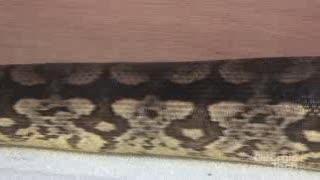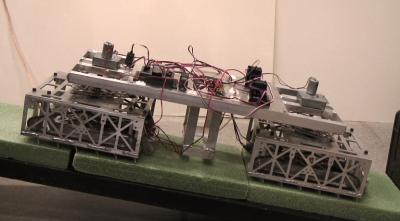Scalybot 2 can automatically change the angle of its scales when it encounters different terrains and slopes. This adjustment allows the robot to either fight or generate friction. The two-link robot is controlled by a remote-controlled joystick and can move forward and backward using four motors.
"Snakes are highly maligned creatures," said Joe Mendelson, curator of herpetology at Zoo Atlanta. "I really like that Hamid's research is showing the public that snakes can help people."
Marvi's advisor is David Hu, an assistant professor in the Schools of Mechanical Engineering and Biology. Hu and his research team are primarily focused on animal locomotion. They've studied how dogs and other animals shake water off their bodies and how mosquitos fly through rainstorms.
This isn't the first time Hu's lab has looked at snake locomotion. Last summer the team developed Scalybot 1, a two-link climbing robot that replicates concertina locomotion. The push-and-pull, accordion-style movement features alternating scale activity.

By observing 20 different species of snakes, Georgia Tech has built a new search-and-rescue robot designed to use less energy. The project is overseen by David Hu, an assistant professor in the Schools of Mechanical Engineering and Biology, and Hamid Marvi, a Mechanical Engineering Ph.D. candidate.
(Photo Credit: The Georgia Institute of Technology)

Scalybot 2, built by Georgia Tech, is designed to be a a more efficient search-and-rescue robot. It was designed based on the movements of snakes.
(Photo Credit: The Georgia Institute of Technology)
Source: Georgia Institute of Technology